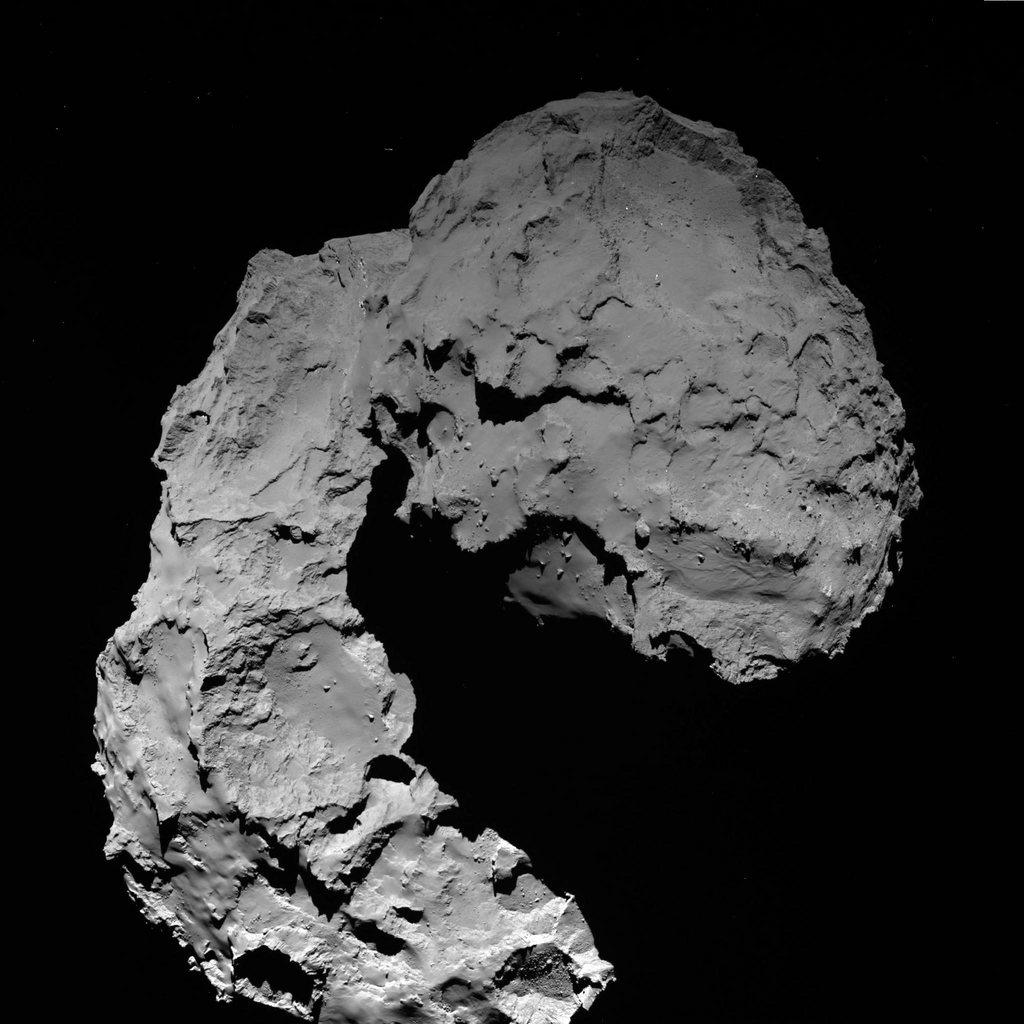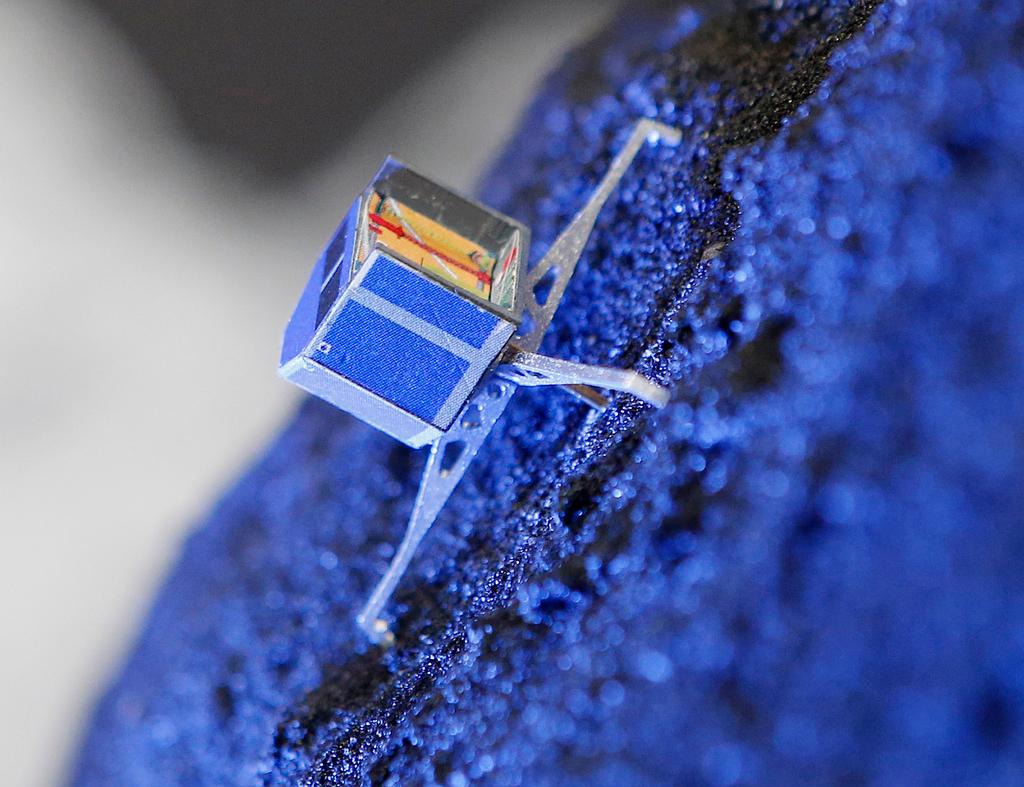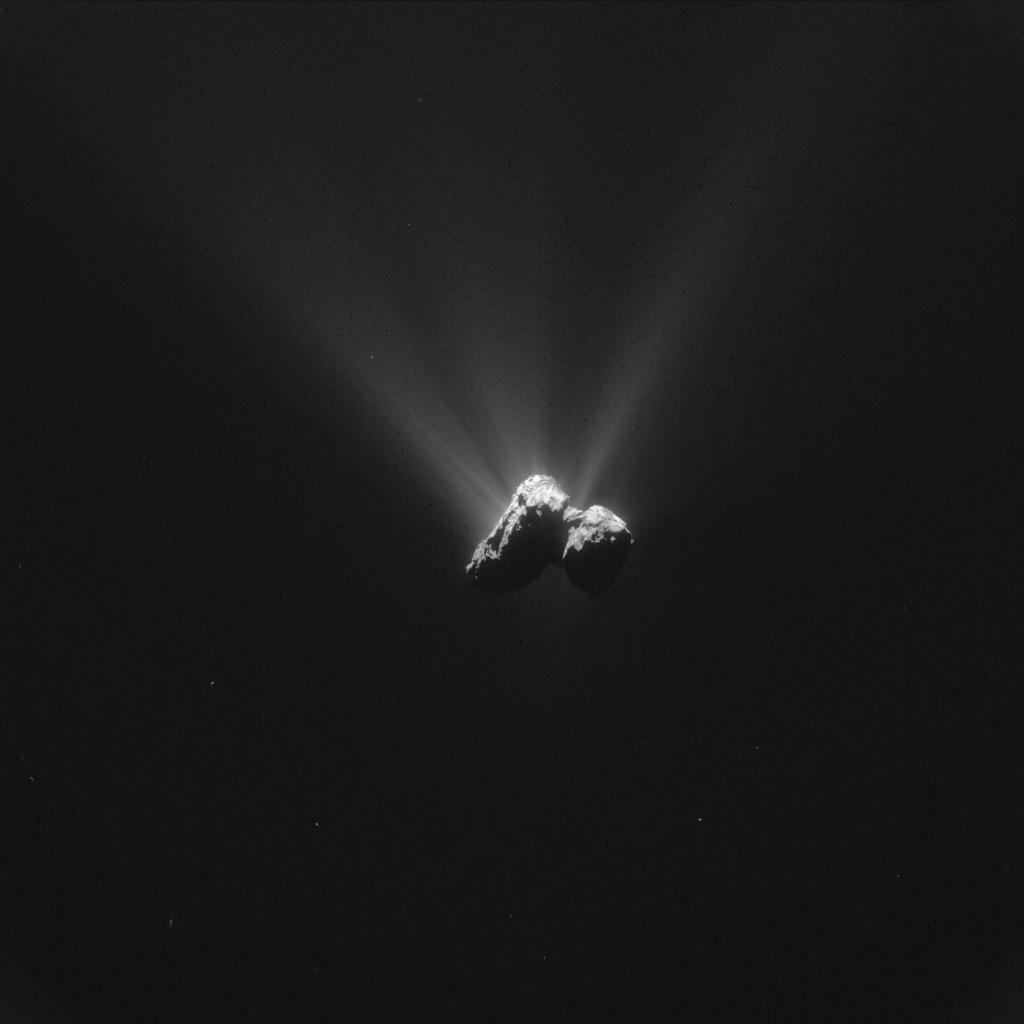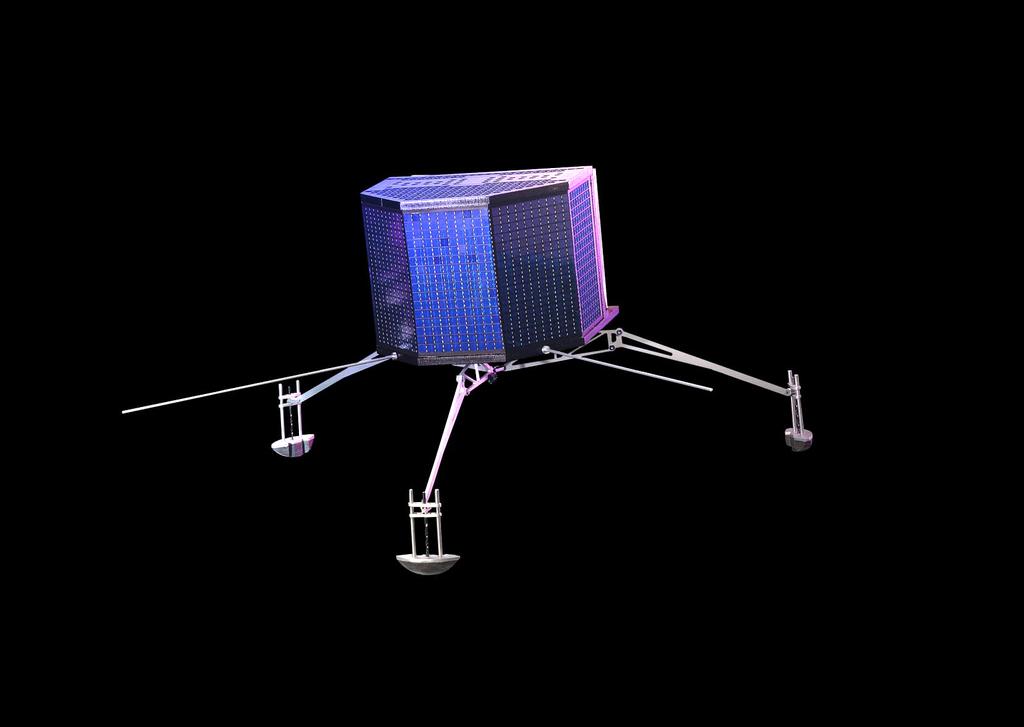Rosetta comet mission ends with a bang

Swiss scientists were among the anxious observers of the Rosetta spacecraft’s “controlled descent” and crash landing on Friday on the surface of Chury – the comet it has faithfully shadowed and studied for more than 12 years.
The European Space Agency reported on Friday that it had lost contact with its Rosetta probe after it hit the surface of the comet, marking the planned end of a 12-year mission.
It was the first mission in history to follow a comet in orbit around the Sun, and to send a robot lander – dubbed Philae – down to the comet’s surface.
A University of Bern team designed and built Rosetta’s ROSINA instrument (Rosetta Orbiter Spectrometer for Ion and Neutral Analysis). At 35 kilograms (77 pounds), ROSINA is the heaviest instrument on board Rosetta, and uses mass spectrometers and a pressure sensor to analyse atoms, molecules and ions in the comet’s vapour.
The researchers also helped develop the MUPUS instrument (Multi-Purpose Sensors for Surface and Subsurface Science) aboard Rosetta’s robot lander, Philae, to help analyse the temperature and composition of Chury’s surface.
Soon, both Rosetta and Chury will travel so far away from the Sun that the solar-powered spacecraft will no longer be able to operate. Since communication with the spacecraft will be impossible, researchers decided to end the mission by programming Rosetta to collide with the comet’s surface.
Rosetta’s trajectory was monitored by the ESA European Space Operations Centre in Darmstadt, Germany. The craft was due to crash land around 2 kilometres (1.2 miles) from Philae’s final resting place on Chury’s surface.
Scientists at the Darmstadt control centre clapped and hugged on Friday after screens showed the loss of signal as Rosetta touched down on the comet.
“Thank you Rosetta,” ESA Director General Jan Woerner tweeted after the landing was confirmed.
The University of Bern team leader, Kathrin Altwegg, was in Darmstadt to monitor the data generated by ROSINA during the spacecraft’s final flight. Ahead of the landing, she told swissinfo.ch that the descent would allow ROSINA to provide the very first measurements of the density of Chury’s atmosphere.
“I’m proud of Rosetta, and of our instrument ROSINA. I’m very proud of our team. On the other hand of course, I’m sad,” said Altwegg.
But Rosetta’s final mission will not be a fruitless one. During its descent, the spacecraft sent unprecedentedly detailed information about Chury’s surface back to Earth.
“I think it’s a fitting end to the mission, but still, you lose something. But I think it’s better to have a nice clean end than to go on with a sickly spacecraft that gets older every day, and then stops working. So I think it’s good to end the mission with a lot of good science,” said Altwegg.
The long-term mission has seen many highs and lows – from Rosetta’s launch, to the release of the robot lander, to Philae’s hibernation, awakening and eventual shutdown – all of which have been cheerfully narrated by the mission’s own Twitter personalities, @ESA_RosettaExternal link and @Philae2014External link.
A job well done
Ten years after its launch on March 2, 2004 from the Guiana Space Centre in French Guiana, the Rosetta spacecraft arrived at Chury – short for Comet 67P/Churymov-Gerasimenko – on August 6, 2014. In November 2014, Rosetta sent the Philae lander down to collect data about the comet’s composition.
In total, Rosetta travelled some six billion kilometres (3.7 billion miles) to reach Chury, via a complicated trajectory of numerous “slingshots” around the Sun, Earth and Mars to gather enough momentum to cross the 400-million kilometre distance.
Scientific highlights of the mission have included the detection of organic molecules glycine and phosphorous – which are key to biological processes like cell membrane and DNA formation – in Chury’s atmosphere. The discovery could shed light on the origins of life on earth.
“Most of the volatile material of the comet is older than the solar system – that’s new information,” said Altwegg. “Before, we thought this material was composed only in the solar nebula, but it seems a lot of it was formed before. This makes these molecules like glycine universal – they have nothing to do with the Earth or the Sun.”
Follow the action on Twitter:

In compliance with the JTI standards
More: SWI swissinfo.ch certified by the Journalism Trust Initiative





You can find an overview of ongoing debates with our journalists here. Please join us!
If you want to start a conversation about a topic raised in this article or want to report factual errors, email us at english@swissinfo.ch.